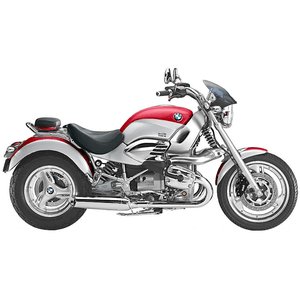BMW R 1200 C [1997-2004]: A Bavarian Cruiser That Defied Convention
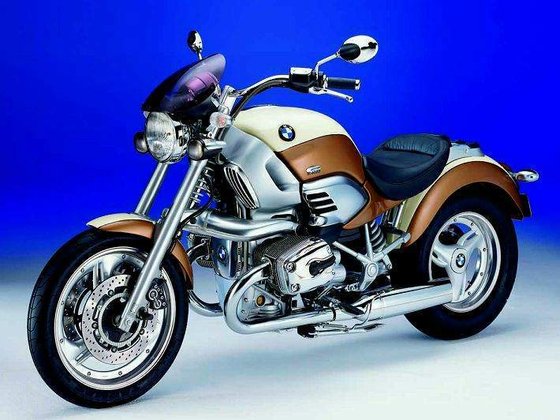
Introduction
When BMW unveiled the R 1200 C in 1997, it wasn’t just launching a motorcycle—it was staging a cultural intervention. Here was a German engineering powerhouse, renowned for its touring and sport bikes, diving headfirst into the cruiser market dominated by American iron and Japanese replicas. The R 1200 C didn’t just mimic cruiser aesthetics; it reimagined them through BMW’s signature lens of innovation. Famously ridden by James Bond in Tomorrow Never Dies and showcased at the Guggenheim Museum’s Art of the Motorcycle exhibition, this bike became a symbol of avant-garde design. But how does it hold up as a riding experience today? Let’s throttle through time and find out.
Design: Where Retro Meets Radical
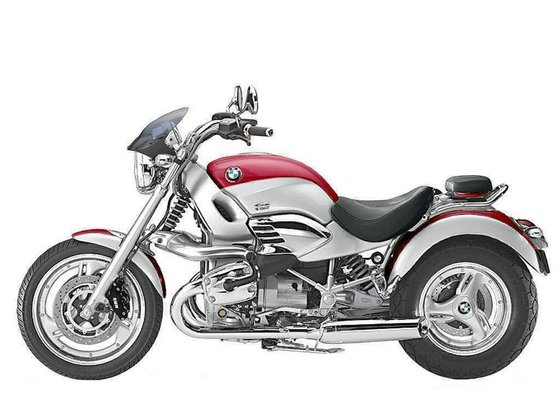
The Boxer’s Bold Statement
The R 1200 C’s horizontally opposed 1,170cc Boxer engine isn’t just a powerplant—it’s a visual centerpiece. Unlike cruisers that hide their engines in a forest of chrome, BMW flaunts the Boxer’s asymmetrical jugs, giving the bike a mechanical authenticity. The engine’s brushed aluminum fins contrast with optional chrome side covers, blending industrial pragmatism with cruiser glitz.
Ergonomics & Customization
With a low 740mm (29.1") seat height and forward footpegs, the R 1200 C adopts a relaxed posture. The pullback handlebars, however, demand a slight stretch, creating a riding position that’s neither full "ape-hanger" nor sporty. The foldable pillion seat doubling as an adjustable backrest is a stroke of genius, though long rides reveal the need for an aftermarket windscreen (a popular MOTOPARTS.store upgrade).
BMW leaned heavily into customization, offering variants like:
- Avantgarde: Graphite accents, mid-rise bars.
- Independent/Phoenix: Solo seat, speedster windshield.
- Montauk: Extended front rake, dual stacked headlights.
Leather grips, optional saddlebags, and interchangeable handlebars let owners tailor the bike’s personality—a tradition many continue today with aftermarket mods.
Riding Experience: Torque, Telelever, and Twists

Engine Performance: Low-End Muscle
The air/oil-cooled Boxer serves up 98 Nm (72.3 lb-ft) of torque at just 3,000 RPM. This isn’t a bike that demands high revs; it’s a shove-in-the-back grunt machine. First gear feels comically tall, as if BMW expected you to tow a trailer, but this pays off in lazy highway cruising. The 5-speed transmission shifts with a satisfying clunk, though the dry clutch can feel agricultural compared to modern hydraulic systems.
Top speed? A modest 172–178 km/h (106–110 mph), but cruisers aren’t about velocity—they’re about vibe. And the R 1200 C’s 61 HP (45 kW) Boxer delivers a rhythmic thrum that’s more jazz bassline than heavy metal.
Handling: The Cruiser That Corners
BMW’s Telelever front suspension—a radical departure from telescopic forks—eliminates dive under braking and lends uncanny stability. Paired with the Monolever rear suspension (a single-sided swingarm), the R 1200 C carves curves with a confidence that harks back to BMW’s sport-touring roots. The 1650mm (65") wheelbase and 256kg (564 lbs) wet weight make it no featherweight, but the chassis feels planted, not ponderous.
Key Numbers:
- Front Tire: 100/90-18 (2.2–2.5 bar / 32–36 psi)
- Rear Tire: 170/80-15 (2.5–2.9 bar / 36–42 psi)
Competition: How the Bavarian Stacked Up
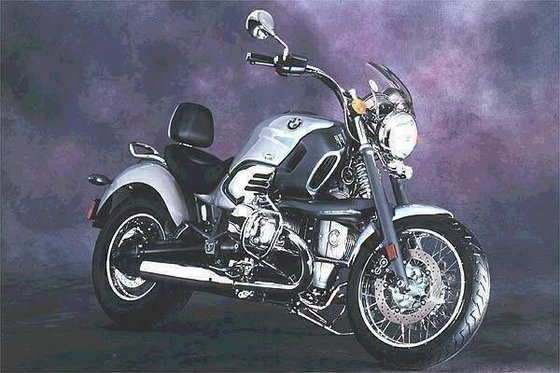
1. Harley-Davidson Sportster 1200
- Pros: Iconic V-twin sound, aftermarket support.
- Cons: Air-cooled engine runs hot; basic suspension.
- BMW Edge: Telelever handling, shaft drive maintenance.
2. Honda VT 1100 Shadow
- Pros: Silky V-twin, lower price.
- Cons: Underpowered (54 HP), dated brakes.
- BMW Edge: Bosch fuel injection, adjustable ergonomics.
3. Yamaha VMAX 1200
- Pros: Brutal acceleration (145 HP).
- Cons: Fuel thirst, punishing ride.
- BMW Edge: Daily rideability, luggage options.
The R 1200 C’s Achilles’ heel? Power. While rivals like the VMAX ruled drag strips, BMW prioritized torque and engineering finesse. It’s a cruiser for riders who value cornering poise over straight-line bravado.
Maintenance: Keeping the Boxer Healthy
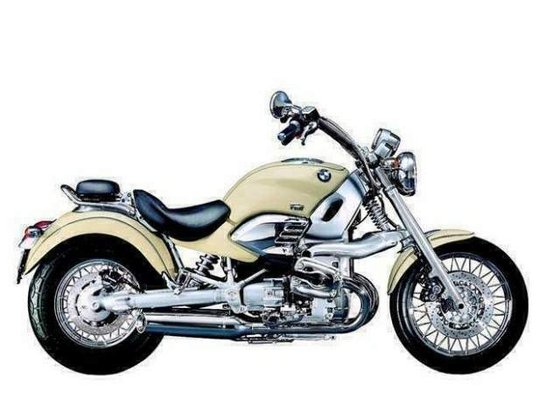
Critical Service Points
- Valve Adjustments:
- Intake: 0.15mm (0.006") cold.
-
Exhaust: 0.30mm (0.012") cold.
Frequency: Every 10,000 km (6,200 miles). -
Fluids:
- Engine Oil: 3.75L (3.97 qt) with filter (SAE 20W-50).
- Gearbox: 800ml (27 oz) SAE 90 GL-5.
-
Final Drive: 200ml (6.8 oz) SAE 90 GL-5.
-
Shaft Drive: No chain lube needed, but inspect seals for leaks.
Common Upgrades
- Windscreens: OEM options are minimal; aftermarket tall screens combat fatigue.
- Seats: Replace the firm stock saddle with a gel insert for marathon rides.
- Brakes: Brembo pads improve bite over the stock sintered units.
Pro Tip: The Telelever’s 41mm stanchions require SAE 10W fork oil—check for leaks at the central strut.
Conclusion: The Cult Classic That Aged Gracefully
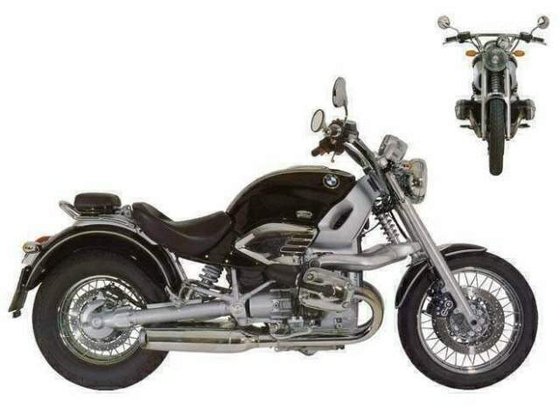
The R 1200 C wasn’t a sales titan, but it carved a niche as a thinking rider’s cruiser. Its blend of Boxer character, shaft-drive reliability, and suspension innovation makes it a compelling used buy today. While later models like the Montauk added dual spark plugs and ABS, even early examples feel remarkably modern.
For owners, MOTOPARTS.store offers everything from NGK BKR7EKC spark plugs to period-correct chrome accessories. This is a motorcycle that rewards tinkering—and with our parts, that tinkering becomes a joy, not a chore.
So, if you spot an R 1200 C at a café stop, know this: It’s not just a cruiser. It’s a statement—one that still turns heads and sparks conversations, decades after its debut.
Ride safe, wrench smart, and keep the Boxer thumping.









Specifications sheet
| Engine | |
|---|---|
| Stroke: | Four-stroke |
| Max power: | 45 kW | 60.0 hp |
| Max torque: | 98 Nm |
| Fuel system: | Bosch Motronic MA 2.4 fuel injection |
| Max power @: | 5000 rpm |
| Displacement: | 1170 ccm |
| Max torque @: | 3000 rpm |
| Bore x Stroke: | 101 x 73 mm (4.0 x 2.9 in) |
| Configuration: | Opposite |
| Cooling system: | Air/Oil cooled |
| Compression ratio: | 10.0:1 |
| Number of cylinders: | 2 |
| Valves per cylinder: | 4 |
| Dimensions | |
|---|---|
| Wheelbase: | 1650 mm (64.9 in) |
| Dry weight: | 236 |
| Wet weight: | 256 |
| Seat height: | 740 mm (29.1 in) |
| Overall width: | 1050 mm (41.3 in) |
| Overall height: | 1130 mm (44.5 in) |
| Overall length: | 2340 mm (92.1 in) |
| Ground clearance: | 172 mm (6.77 in) |
| Fuel tank capacity: | 17.5 L (4.6 US gal) |
| Drivetrain | |
|---|---|
| Gear Ratio: | 1st 2.045 / 2nd 1.600 / 3rd 1.267 / 4th 1.038 / 5th 0.800:1 |
| Final drive: | shaft |
| Transmission: | 5-speed, dry single-plate hydraulic clutch |
| Electrical | |
|---|---|
| Battery: | 19.5 Ah maintenance-free |
| Headlights: | Dual vertically stacked halogen |
| Charging system: | 14V 50A alternator (700W) |
| Maintenance | |
|---|---|
| Engine oil: | 20W50 |
| Idle speed: | 750 ± 150 rpm |
| Brake fluid: | DOT 4 |
| Gearbox oil: | SAE 90 GL-5 |
| Spark plugs: | NGK BKR7EKC (main), NGK BKR7EIX (secondary) |
| Final drive oil: | SAE 90 GL-5 |
| Forks oil capacity: | 0.94 |
| Rear tire pressure: | 2.5 bar (36 psi) / 2.9 bar (42 psi) loaded |
| Engine oil capacity: | 3.75 |
| Front tire pressure: | 2.2 bar (32 psi) / 2.5 bar (36 psi) loaded |
| Gearbox oil capacity: | 0.8 |
| Final drive oil capacity: | 0.2 |
| Engine oil change interval: | Every 5000 km or 2 years |
| Valve clearance (intake, cold): | 0.15 mm |
| Valve clearance check interval: | 24,000 km (15,000 mi) |
| Valve clearance (exhaust, cold): | 0.30 mm |
| Performance | |
|---|---|
| Top speed: | 178 km/h (110 mph) |
| 0-100 km/h: | 5.3 seconds |
| Fuel consumption: | 5.9 L/100 km (40 US mpg) |
| Chassis and Suspension | |
|---|---|
| Frame: | Three-section composite aluminum frame |
| Trail: | 86 mm (3.4 in) |
| Rear tire: | 170/80-15 |
| Front tire: | 100/90-18 |
| Rear brakes: | Single 285 mm disc, 2-piston caliper (ABS optional) |
| Front brakes: | 2 x 305 mm discs, 4-piston calipers (ABS optional) |
| Rear suspension: | Monolever single-sided swingarm with WAD strut, 110 mm (4.3 in) travel |
| Front suspension: | BMW Telelever, 35 mm stanchion, 145 mm (5.7 in) travel |



